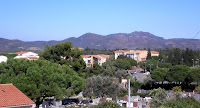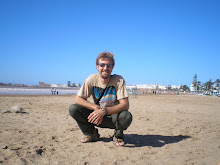We have a good gig here. We have a nice apartment in a welcoming complex. The guardien (“super”) is very kind and helpful and loves Maggie. Our landlords are generous, available and lively. The apartment is very well equipped and very convenient to Irie’s school, a large grocery store, various services and of course the beach. We have a lovely Playel piano that I’m sure contributes to Irie’s rapid progress in her lessons. It’s about a 10 minute bike ride to centre ville, about 7 minutes on the bus. The bus stops right in front of the school and we are lucky enough to be on the line of the environmental electric bus. Too bad it doesn’t run on Sundays.
France is divided into départements, there are close to 100, which are further divided into arrondissements. Think counties and districts. Then there are cantons and communes. We live in the département of the Var (#83). The Var has 3 arrondissements, ours is Draguignan. Within this arrondissement is the canton of Fréjus. In this canton is the commune of Fréjus-Plage, which is where we live. Our friends Nathalie and Laurent live in Fréjus-ville; Port Fréjus is just a few blocks away. To further complicate things Fréjus and the neighboring city of St. Raphaël form an agglomeration. For our lives we are concerned with Fréjus-Plage, as that is who runs Irie’s school, the Var because if something is in the Var, we know it’s nearby, and the agglo of Fréjus-St. Raphaël because that tends to be a cultural cooperation, ie concerts, festivals. All this is located in the fuzzy-bordered area known as Provence.
It turns out that Fréjus is a very cool town. It’s name comes from Forum Julii, which is the latin name given to this Roman port, under Julius Ceasar in the 1st century BC. The lay of the land was different then. The port went further inland and what is the beach area now didn’t exist. The flooding of the river Argens over the years carried enough silt to create new land and a Mediterranean beach town.
One of the things we love about France is that despite its thousands of years of human upheaval--wars, migrations, disease, revolutions, intellectual tides--its historical items are pretty well preserved. Throughout the south of France remain the ruins of ancient Rome, famous cities such as Arles and Nîmes and their famous aqueducts, Le Pont du Gard. We visited Nîmes and the Pont du Gard during our last visit in 1996, but had no idea of the Roman riches that lay await in the unheralded little town of Fréjus. Quite honestly, no remembrance of the existence of a town called Fréjus, or St. Raphaël, even though we drove the coast from St. Tropez to Cannes so it is possible we might have passed through both on that trip.
Having now lived in Fréjus for almost 3 months, we have had time to get to know this little gem. As the photo gallery shows, there are a host of archeological highlights here. Some of the ruins remain standing, slowly decaying where they were left (sometimes now found in someone’s backyard!), others are being restored and/or put to use in modern times, and excavations continue to unearth new finds and knowledge of Roman times in this area (housed in the Musée Archéologique). The amphitheatre or coliseum was built in the 1st century A.D., and like all Roman amphitheatres, was used for gladiatorial combat and wild animal hunts. It has hosted events such as concerts, tennis matches, and bullfights until very recently, and is currently being restored. It is situated outside the ancient city ramparts, so that citizens from neighboring towns could come on over to compete in events without the locals having to risk them entering the city.
 Look at us in the pictures of the amphitheatre and imagine our incredulity at wandering around under the same arches that people in togas did 2000 years ago. The Théatre Romain has a modern semi-circular stadium built within the old ruins. The Romans of Forum Julii probably watched tragedies or comedies here; modern Fréjusians saw The Police.
Look at us in the pictures of the amphitheatre and imagine our incredulity at wandering around under the same arches that people in togas did 2000 years ago. The Théatre Romain has a modern semi-circular stadium built within the old ruins. The Romans of Forum Julii probably watched tragedies or comedies here; modern Fréjusians saw The Police. 
The remains of the Aqueduct (pictured on the top of the blog home page) stretches for kilometers from centre ville to the outer hills where it ends.

There are also ramparts left standing from the old city walls used to protect the city, the Lanterne d’Auguste which was a sentinel of the old port (now far inland),
 and unnamed columns standing alone in various locales.
and unnamed columns standing alone in various locales. Among the treasures in the Musée Archéologique are the Hermès bicephale (2 heads)
 and the mosaic with leopard.
and the mosaic with leopard.  The Hermès (about 12-15” high) once topped a bourne (milemarker). Hermès was believed to protect travelers and so Romans topped milemarkers with these 2 or 3 headed sculptures. The one in the Fréjus museum was found near downtown in 1970. It is in superb shape. The two heads are thought to represent Pan on one side and Dionysos on the other. This bicephale has become the symbol of Fréjus and appears on all city insignia. There is a big stone replica on a round-about near our apartment (see photos). The leopard mosaic was found on a dig in 1921 still intact in near perfect condition. It is about the size of an 8’x10’ area rug. Another dig found a Roman house under the main square that gave great insight into the living conditions and culture of the times as it included painted walls, decorative objects and a well. This “living history” is one of the things we find so fascinating about being here where so much of what we learned in Western Civilization 101 surrounds us to be experienced firsthand.
The Hermès (about 12-15” high) once topped a bourne (milemarker). Hermès was believed to protect travelers and so Romans topped milemarkers with these 2 or 3 headed sculptures. The one in the Fréjus museum was found near downtown in 1970. It is in superb shape. The two heads are thought to represent Pan on one side and Dionysos on the other. This bicephale has become the symbol of Fréjus and appears on all city insignia. There is a big stone replica on a round-about near our apartment (see photos). The leopard mosaic was found on a dig in 1921 still intact in near perfect condition. It is about the size of an 8’x10’ area rug. Another dig found a Roman house under the main square that gave great insight into the living conditions and culture of the times as it included painted walls, decorative objects and a well. This “living history” is one of the things we find so fascinating about being here where so much of what we learned in Western Civilization 101 surrounds us to be experienced firsthand. Fréjus centre ville, aside from the ruins, is also very charming and european in character and has a lovely skyline from Fréjus-Plage where we live.
 The Mairie (city hall) and the 4th century (and beyond) cathedral
The Mairie (city hall) and the 4th century (and beyond) cathedral  sit on the central square surrounded by small shops and outdoor cafes. Narrow streets branch off in all directions leading to a bakery here, a small “place” (plaza) there, including one with an 1100 year old olive tree,
sit on the central square surrounded by small shops and outdoor cafes. Narrow streets branch off in all directions leading to a bakery here, a small “place” (plaza) there, including one with an 1100 year old olive tree, 
or a small tropical market where I found dried beans, fresh okra and peanut butter. The main street,
 the ubiquitous Jean Jaurès (this WWI hero has his name all over France), arcs its way through the center of town. Our friends, Nathalie and Laurent, live in the center of it all and like so many others, the old-looking cement exterior of their building in no way belies the modern interior. Beyond the city center are the Esterel Mountains, creating a nice backdrop
the ubiquitous Jean Jaurès (this WWI hero has his name all over France), arcs its way through the center of town. Our friends, Nathalie and Laurent, live in the center of it all and like so many others, the old-looking cement exterior of their building in no way belies the modern interior. Beyond the city center are the Esterel Mountains, creating a nice backdrop  that reminds us of home in Oregon, a great place for mountain-biking, and more history as it is up here where the dam burst in 1959 flooding Fréjus and killing 453 people. But that’s another story for another post.
that reminds us of home in Oregon, a great place for mountain-biking, and more history as it is up here where the dam burst in 1959 flooding Fréjus and killing 453 people. But that’s another story for another post.


4 comments:
Brings back some good memories of our stay with you guys in October. By the way cold and snowing, got 2" this am.
Love dad & mom browne
Great post and photos! Ton ami, Brien
Thanks Brien! Been meaning to write back to you, en francais, but...oh I could come up with all kinds of excuses :) French homework, being a good father and husband, biking with my new friend Laurent, having fun, preparing for our first dinner party (i.e. serving an American Thanksgiving dinner for 9 sans le dinde as they are not available jusqu'a Noel - we're having les poulets instead).
Hope the school year is going well, and that you have a great Thanksgiving wherever you may celebrate!
Je suis sûre que vous en savez plus sur l'histoire de notre belle ville que beaucoup de fréjussiens!
Nath
Post a Comment